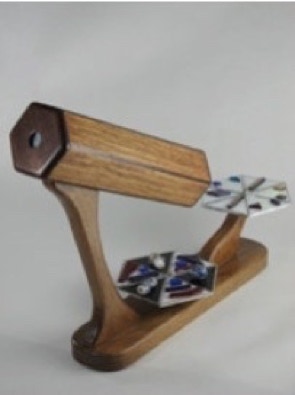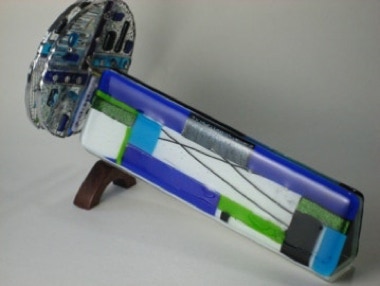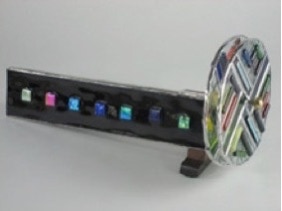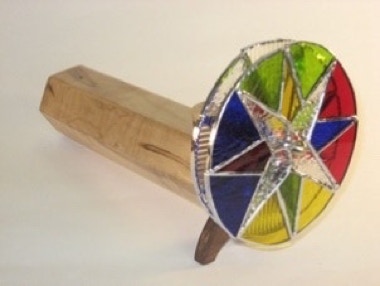how do you make a
kaleidoscope?
T he heart of a kaleidoscope is a three-dimensional prism made of mirrors. Several different mirror systems are used to produce different forms of symmetry in the kaleidoscope image. We use only first-surface mirror (silvered on the front instead of the back) for increased clarity of images and elimination of errors caused by refraction.
A lthough the internal optics of a kaleidoscope consist of mirrors, the body can be made of any material. We design and make all-glass kaleidoscopes as well as scopes of finely finished hardwoods, in the tradition of many 19th century kaleidoscopes. Each kaleidoscope is mounted on its own base, some designed to be handheld and some to rest on a table or desk. Each has independently rotating stained glass wheels, a rotating cylinder, or an object chamber containing kilnworked or drawn glass pieces suspended in oil.
We use only selected domestic and plantation-grown exotic hardwoods in our wood scopes. Each wood kaleidoscope is made from several strips of hardwood cut at precise angles and joined to form a cylinder through use of the “coopering” technique, similar to the method used to make barrels. Each scope is hand-sanded then hand-rubbed with three to six coats of oil finish. The color of the wood will change through the years as the wood ages.
All stained glass work is done with pieces of art glass individually cut and ground to fit, then edge-wrapped in copper foil, burnished, and soldered together. Designs for kaleidoscope objectives combine color balance, intensity, contrast, delicacy, and structural integrity to produce the image you see.








